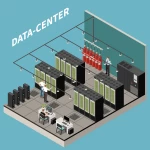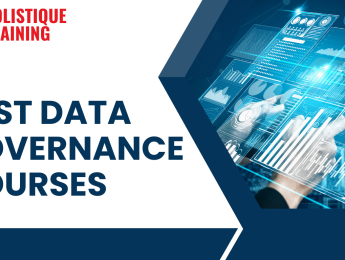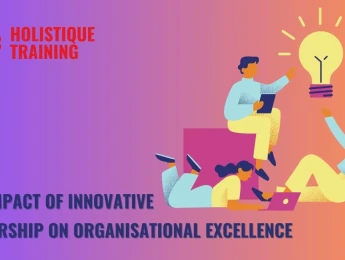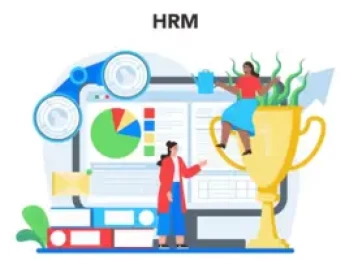- Table of Contents
- Introduction
- Understanding the Accounts Payable Process
- Key Stages of the Accounts Payable Process
- 1- Invoice Receipt and Validation
- 2- Invoice Approval
- 3- Recording and Coding
- 4- Payment Processing
- 5- Reconciliation
- 6- Vendor Communication
- Advantages of Having an Effective Accounts Payable Process
- Enhanced Cash Flow Management
- Cost Savings through Discounts
- Improved Vendor Relationships
- Reduced Risk of Penalties and Interest Charges
- Enhanced Financial Accuracy and Reporting
- Increased Operational Efficiency
- Prevention of Fraud and Errors
- Strategic Financial Planning
- Positive Impact on Credit Ratings
- Adaptability to Market Dynamics
- The Risks of Neglecting an Effective Accounts Payable Process
- Cash Flow Disruptions
- Missed Discounts
- Late Payment Penalties
- Errors and Fraud
- Poor Vendor Relationships
- Tips and Best Practices for Optimising Your Accounts Payable Process
- 1- Implement an Automated System
- 2- Clear Approval Hierarchies
- 3- Supplier Relationship Management
- 4- Accurate Data Entry
- 5- Regular Reconciliation
- 6- Utilise Electronic Payments
- 7- Take Advantage of Discounts
- 8- Segregation of Duties
- 9- Streamlined Invoice Coding
- 10- Regular Audits
- 11- Employee Training
- 12- Cloud-Based Document Management
- The Role of Technology in Achieving an Effective Accounts Payable Process
- Automation of Repetitive Tasks
- Enhanced Visibility and Tracking
- Electronic Document Management
- Data Analytics for Informed Decision-Making
- Electronic Payments for Speed and Security
- Integration with ERP Systems
- Machine Learning and Predictive Analytics
- Conclusion
Introduction
Efficient financial management lies at the heart of every successful business. One crucial aspect of this management is the Accounts Payable (AP) process, which involves managing a company's outstanding obligations to vendors and suppliers. While it might seem straightforward, the AP process's intricacies and nuances require meticulous attention to detail and a well-defined set of best practices. In this comprehensive guide, we will delve into the depths of the AP process, explore the risks associated with neglecting its optimisation, and provide invaluable tips to streamline and enhance your company's accounts payable workflow.
Understanding the Accounts Payable Process
The accounts payable process encompasses the entire cycle of activities involved in handling a company's financial obligations to external parties. From the receipt of invoices to the actual disbursement of funds, every step in this process plays a significant role in maintaining healthy vendor relationships, avoiding costly mistakes, and ensuring financial stability. Let's break down the accounts payable process into its key stages.
Key Stages of the Accounts Payable Process
1- Invoice Receipt and Validation
The journey begins with the arrival of invoices from vendors, a seemingly routine task that conceals a labyrinth of potential discrepancies. The importance of this stage cannot be overstated, as meticulous validation against corresponding purchase orders and receipts is paramount. Accuracy at this juncture lays the foundation for the entire process, preventing downstream complications and ensuring that financial transactions align precisely with the goods or services received.
2- Invoice Approval
Once invoices have undergone scrutiny and validation, they traverse the company's approval channels. This stage serves as a crucial checkpoint, preventing unauthorised payments and enforcing compliance with internal spending policies. Clear and defined approval workflows become the gatekeepers, ensuring that every payment adheres to established protocols, thereby fortifying financial integrity.
3- Recording and Coding
With approved invoices in tow, the next step involves their accurate recording within the company's accounting system. The assignment of appropriate account codes for tracking and reporting purposes is not a mere formality but a strategic necessity. A robust coding system ensures that financial data is organised and easily accessible, laying the groundwork for comprehensive financial reporting and analysis.
4- Payment Processing
The culmination of the accounts payable process is the strategic scheduling and processing of payments. This stage involves carefully orchestrating financial transactions based on pre-negotiated terms with vendors. The methods of payment, whether electronic transfers, checks, or other means, are determined here. Effective payment processing fulfils the company's financial obligations, impacts cash flow, and influences vendor relationships.
5- Reconciliation
Regular reconciliation of vendor statements and payment records adds a layer of financial vigilance to the process. This ongoing scrutiny is a proactive measure to identify any discrepancies promptly. Reconciliation safeguards against overpayments or underpayments and contributes to the accuracy of financial records, a critical aspect of maintaining fiscal responsibility.
6- Vendor Communication
Interwoven throughout the entire process is the imperative of clear and effective communication with vendors. This extends beyond a mere courtesy; it is a strategic necessity. Timely and transparent communication addresses vendor inquiries, resolves potential issues, and nurtures positive working relationships. In a landscape where collaboration is key, fostering strong ties with vendors can lead to preferential treatment, smoother transactions, and potentially advantageous terms.
The accounts payable process is a dynamic and interconnected sequence of activities, each with its unique set of challenges and opportunities. Recognising the importance of each stage and the delicate interplay between them is pivotal for businesses aiming not only for financial stability but also for establishing themselves as reliable and trustworthy partners in the broader economic ecosystem.
Metric | Description | Importance |
Days Payable Outstanding (DPO) | Measures average time taken to pay bills. | Indicates efficiency in managing payments. |
Early Payment Discount Capture | Rates success in leveraging vendor discounts. | Highlights cost-saving opportunities. |
Invoice Processing Time | Tracks time from receipt to approval. | Reflects operational efficiency levels. |
Accuracy of Payment Processing | Assesses correctness in payment transactions. | Ensures financial data integrity. |
Vendor Satisfaction Index (VSI) | Gauges vendors' contentment with payment processes. | Influences future collaboration potential. |
Table 1: Metrics to measure the effectiveness of an accounts payable process
Advantages of Having an Effective Accounts Payable Process
An effective accounts payable (AP) process is not just a matter of financial housekeeping; it serves as a cornerstone for a business's overall health and vitality. Beyond risk mitigation and streamlined operations, there are numerous advantages to cultivating and maintaining an efficient accounts payable process.
Enhanced Cash Flow Management
A well-optimised AP process ensures that payments are made on time and by agreed-upon terms. This, in turn, contributes to consistent and predictable cash flow. By avoiding delays and disruptions, businesses can better manage their capital and strategically allocate resources.
Cost Savings through Discounts
Efficient accounts payable processes enable businesses to capitalise on early payment discounts offered by vendors. This translates into direct cost savings, positively impacting the company's bottom line. Actively seeking and taking advantage of these discounts represents a proactive approach to financial management.
Improved Vendor Relationships
A streamlined AP process fosters positive relationships with vendors. Timely payments, clear communication, and adherence to agreed-upon terms create a trustworthy and reliable reputation. Strong vendor relationships can lead to preferential treatment, more favourable contract terms, and collaborative opportunities that go beyond the transactional.
Reduced Risk of Penalties and Interest Charges
By adhering to payment schedules and terms, businesses can avoid late payment penalties and interest charges. This protects the company's profitability and upholds its reputation for financial responsibility. Consistent and timely payments contribute to a positive perception among vendors and stakeholders.
Enhanced Financial Accuracy and Reporting
Accurate recording, coding, and reconciliation within the AP process lay the foundation for precise financial reporting. This, in turn, aids in strategic decision-making by providing stakeholders with reliable financial data. Businesses with transparent and accurate financial reporting are better positioned for growth and investment.
Increased Operational Efficiency
Automation and optimisation within the AP process lead to increased operational efficiency. Reduced manual intervention, faster processing times, and minimal errors free up valuable time and resources. This allows the finance team to focus on more strategic initiatives and contributes to the organisation's overall productivity.
Prevention of Fraud and Errors
A well-structured AP process, including segregation of duties and regular audits, is a robust defence against fraud and errors. Implementing internal controls ensures that financial transactions are secure and accurate. This not only protects the company's assets but also safeguards its integrity.
Strategic Financial Planning
Reliable AP data and a well-organised process empower businesses with valuable insights for strategic financial planning. Understanding cash flow patterns, vendor relationships, and payment trends enables proactive decision-making, contributing to the company's long-term financial sustainability.
Positive Impact on Credit Ratings
Consistently meeting financial obligations positively impacts a company's creditworthiness. Timely payments and responsible financial practices contribute to a favourable credit rating, which, in turn, opens up opportunities for favourable credit terms, improved borrowing capacity, and potential partnerships.
Adaptability to Market Dynamics
A well-managed AP process enhances a company's agility in responding to market dynamics. The ability to quickly process payments, negotiate favourable terms, and adapt to changing financial landscapes positions businesses to navigate economic uncertainties with resilience.
In essence, the advantages of having an effective accounts payable process extend far beyond financial bookkeeping. It becomes a strategic asset, contributing to a business's overall competitiveness and sustainability in a dynamic and ever-evolving marketplace. As organisations continue to recognise the strategic importance of efficient financial processes, optimising the accounts payable process emerges as a key driver for long-term success.
The Risks of Neglecting an Effective Accounts Payable Process
Failing to establish and adhere to an optimised accounts payable process can have dire consequences for a company's financial health and reputation. Here are some common risks associated with neglecting the AP process:
Cash Flow Disruptions
One of the most immediate and tangible risks associated with an inefficient accounts payable process is cash flow disruption. Inaccuracies in payment timing or delays can strain relationships with vendors, leading to potential disruptions in the supply chain. This, in turn, can have a cascading effect on the company's ability to meet its financial obligations, affecting day-to-day operations and overall financial health.
Missed Discounts
Vendors often offer discounts to encourage early payments. Neglecting to optimise the accounts payable process may result in overlooking these discounts, leading to unnecessary expenditures. This impacts the bottom line and represents a missed opportunity for cost savings that could contribute to increased profitability.
Late Payment Penalties
On the flip side of missed discounts, late payments can trigger penalties and interest charges. An inefficient accounts payable process that results in delayed payments incurs additional costs and tarnishes the company's reputation for reliability. Consistent late payments may strain vendor relationships and hinder the negotiation of favourable terms in the future.
Errors and Fraud
Inadequate validation and oversight within the accounts payable process create vulnerabilities that can be exploited for errors or, in more severe cases, fraudulent activities. Without a robust system in place, businesses risk financial losses and damage to their integrity. Fraudulent activities, whether internal or external, can have far-reaching consequences, affecting both financial stability and the trust of stakeholders.
Poor Vendor Relationships
Beyond the immediate financial implications, a disorganised accounts payable process can strain vendor relationships. The lack of transparency, delayed communications, and payment discrepancies can erode trust and hinder effective collaboration. Maintaining positive vendor relationships is essential for long-term success in a business landscape where partnerships are crucial.
Mitigating these risks requires a proactive approach to optimising the accounts payable process. Implementing best practices, leveraging technology, and fostering clear communication can act as preventive measures, fortifying the organisation's financial resilience. As we delve into the actionable tips and best practices to optimise the accounts payable process later in this guide, it becomes clear that addressing these risks is not just a matter of financial prudence but a strategic imperative for sustained success in the dynamic business environment.
Tips and Best Practices for Optimising Your Accounts Payable Process
Now that we understand the significance of a streamlined accounts payable process, let's explore actionable tips and best practices to elevate your AP process to new heights of efficiency and effectiveness:
1- Implement an Automated System
Leverage technology to automate various aspects of the accounts payable process. Automation can encompass invoice receipt, approval workflows, and payment scheduling. By reducing manual intervention, automation minimises human error, accelerates processing times, and provides enhanced visibility into the entire process.
2- Clear Approval Hierarchies
Define and communicate clear approval hierarchies for invoices. Establishing a transparent approval process minimises delays and ensures that all payments align with company policies and budgetary constraints. This structured approach also enhances accountability and reduces the risk of unauthorised payments.
3- Supplier Relationship Management
Cultivate strong relationships with your vendors. Regular communication goes beyond transactional interactions, leading to smoother dispute resolution, early problem identification, and potentially more favourable terms. Investing in positive vendor relationships contributes to a collaborative and mutually beneficial business environment.
4- Accurate Data Entry
Error-free data entry is paramount in the accounts payable process. Implement measures to validate invoice data against purchase orders and receipts. This not only reduces discrepancies but also speeds up the overall processing time. Accurate data entry is fundamental to the integrity of financial records.
5- Regular Reconciliation
Establish a routine for reconciling your records with vendor statements. Regular reconciliation helps promptly identify discrepancies, preventing overpayments, underpayments, and other accounting errors. This proactive measure contributes to the accuracy of financial reporting.
6- Utilise Electronic Payments
Whenever possible, opt for electronic payment methods. Electronic funds transfers (EFTs) offer speed, security, and often come with electronic remittance advice, simplifying the reconciliation process. Embracing digital payment methods aligns with modern financial practices and enhances overall efficiency.
7- Take Advantage of Discounts
Train your accounts payable team to identify and capitalise on early payment discounts offered by vendors. This not only saves money for the company but also strengthens vendor relationships. Actively seeking and taking advantage of discounts contributes to cost savings and improved cash flow.
8- Segregation of Duties
Implement segregation of duties within the accounts payable process to prevent fraud. Distribute responsibilities among multiple individuals, ensuring no single person has end-to-end control. This multi-layered approach adds checkpoints and safeguards against fraudulent activities.
9- Streamlined Invoice Coding
Develop and implement a consistent coding system for invoices. This promotes accurate reporting and makes it easier to track expenses by category. A standardised coding system simplifies financial analysis and ensures uniformity in reporting practices.
10- Regular Audits
Conduct periodic audits of your accounts payable process. These audits help identify bottlenecks, compliance issues, and opportunities for improvement. Regular assessments contribute to the continuous refinement of the accounts payable workflow.
11- Employee Training
Invest in ongoing training for your accounts payable team. Keeping them updated on best practices and industry trends enhances their skills and awareness. Well-trained personnel are better equipped to navigate the evolving landscape of financial processes, leading to increased efficiency and reduced errors.
12- Cloud-Based Document Management
Embrace cloud-based document management systems to centralise invoice storage, approvals, and payment history. This centralised approach enhances accessibility and collaboration, especially in a business environment where remote work and digital collaboration are increasingly prevalent.
In short, the accounts payable process is a complex web of tasks that demands precision, efficiency, and adaptability. By implementing the tips above and best practices, businesses can safeguard their financial health and lay the groundwork for more productive vendor relationships, improved cash flow, and enhanced business agility. The road to success is indeed paved with well-managed accounts payable processes, and embracing these strategies positions companies to thrive in the ever-evolving landscape of financial management.
The Role of Technology in Achieving an Effective Accounts Payable Process
In the modern business landscape, technology is pivotal in transforming and optimising various operational facets, and the accounts payable (AP) process is no exception. Embracing technology addresses the challenges inherent in manual processes and unlocks opportunities for efficiency, accuracy, and strategic financial management. Here's an exploration of the multifaceted role technology plays in achieving an effective accounts payable process:
Automation of Repetitive Tasks
Technology enables the automation of repetitive and time-consuming tasks within the AP process. From the receipt of invoices to their validation, approval workflows, and payment schedule, automation reduces the reliance on manual intervention. This expedites processing times and minimises the likelihood of human errors, contributing to a more streamlined and error-resistant workflow.
Enhanced Visibility and Tracking
Advanced software solutions provide enhanced visibility into the AP process. Businesses can track the status of invoices, approvals, and payments in real-time. This transparency is invaluable for both internal stakeholders and external auditors, ensuring accountability, compliance, and the ability to identify bottlenecks or inefficiencies promptly.
Electronic Document Management
The shift towards electronic document management systems centralises the storage of invoices, approvals, and payment history. Cloud-based solutions offer accessibility from anywhere, facilitating seamless collaboration, especially in a landscape where remote work is increasingly prevalent. This centralised approach not only improves collaboration among team members but also simplifies the retrieval of historical data for audits or analysis.
Data Analytics for Informed Decision-Making
Technology empowers businesses to leverage data analytics tools for informed decision-making. By analysing patterns in spending, vendor performance, and payment trends, organisations can make strategic decisions to optimise cash flow, negotiate better terms with vendors, and enhance overall financial planning. This analytical capability adds a layer of intelligence to the AP process, aligning it with broader business objectives.
Electronic Payments for Speed and Security
The adoption of electronic payment methods, such as Electronic Funds Transfers (EFTs), offers advantages in terms of speed, security, and accuracy. EFTs expedite payment processing and come with electronic remittance advice, simplifying the reconciliation process. This transition to digital payment methods aligns with the broader trend towards a cashless economy and modernises the financial interactions between businesses and vendors.
Integration with ERP Systems
Integrating AP technology with Enterprise Resource Planning (ERP) systems creates a cohesive ecosystem for financial management. This integration streamlines data flow between different departments, reducing silos and ensuring consistency in reporting. A unified platform enhances collaboration and communication, creating synergy between accounts payable and other financial functions.
Machine Learning and Predictive Analytics
The incorporation of machine learning and predictive analytics enhances the AP process's forecasting capabilities. By analysing historical data, these technologies can predict cash flow patterns, anticipate payment delays, and identify potential areas for cost savings. This forward-looking approach enables businesses to address challenges and capitalise on opportunities proactively.
In essence, technology catalyses the evolution of the accounts payable process from a traditional, manual function to a dynamic and strategic financial management component. By harnessing technology's capabilities, businesses can not only achieve efficiency gains but also position themselves for greater agility, accuracy, and competitiveness in an ever-changing business landscape. Integrating technology in accounts payable is not just an enhancement; it is a fundamental driver of operational excellence and financial resilience.
Conclusion
The accounts payable process is an intricate dance of tasks that requires meticulous attention to detail, effective communication, and streamlined workflows. Neglecting its optimisation can lead to a cascade of financial, operational, and reputational challenges. By implementing the best practices outlined in this guide, you're safeguarding your company's financial health and setting the stage for more productive vendor relationships, improved cash flow, and enhanced business agility. If you're ready to take your accounts payable process to the next level, make sure to check out our comprehensive course, ‘Accounts Payable Best Practice & Organisation,’ where you'll gain hands-on insights and expert guidance to elevate your financial operations further. Remember, the road to success is paved with well-managed accounts payable processes.
























